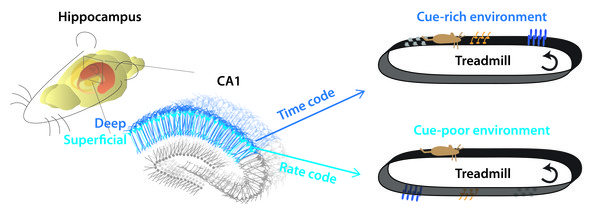Researchers at the Korea Institute of Science and Technology (KIST) have found that the brain hippocampus uses rate code and phase code, like bar code, and a special mechanism to identify paths.

Hippocampus is a complex brain structure embedded into the temporal lobe, playing a vital role in learning and memory.
The team, led by Dr. Sébastien Royer at KIST’s Brain Science Center, conducted the study through two different spatial experiments. First, they trained mice to run sequentially in a long belt set up in a treadmill on a space set up with small objects and empty spots.
The second experiment was conducted by placing items in circular containers or emptying them. Then, researchers analyzed nerve cells' activity by planting silicon probe electrodes in CA1 and CA3, the smaller areas of the hippocampus.
They found that the hippocampus uses separate input strategies and information processing methods depending on situations and environmental conditions of space, location and object.

In object-free surroundings, the cell group on the CA1 surface activated using the rate code that stored the frequency with a nerve cell, invoking activity potential by matching space and location. Contrarily, in environments with many objects, phase codes were observed, which store time intervals in different nerve cells together, mainly used in information processing as CA1 activity increases.
The team concluded that frequency codes are used to grasp the idea of location and space, and phase codes are used to remember the relationship between the exact location, space and object. CA3 functions function as a navigator in simpler environments, and CA1 in complex surroundings, they said.
“We could understand how the hippocampus process information, which will likely become the basis of identifying how memories work,” Dr. Royer said. “We expect the study will help treat and diagnose brain diseases such as Alzheimer’s disease, memory loss and cognitive impairment.”
The study results were published in the latest issue of Neuron.

